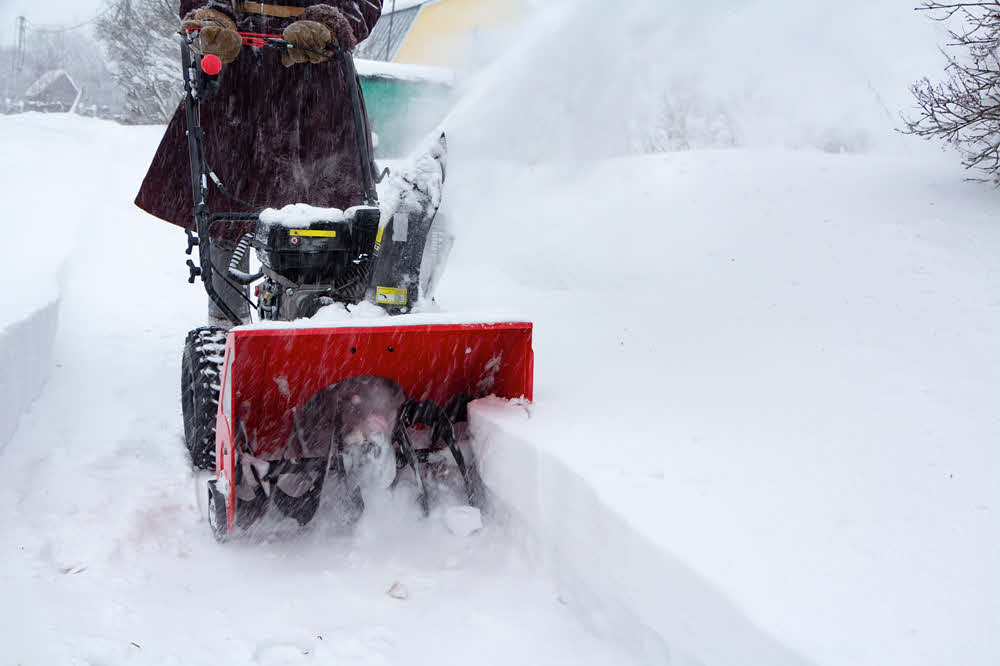Snow and Ice Controlin Armada MI
Reliable Strategies to ManageSnow and Ice Throughout the Season
We Are Locally Owned & Operated For Over 37 Years
Contact Us Today!
We Serve Businesses In And Around The Following Cities:
About Snow and Ice Control
The Essence of Snow and Ice Control in Armada: A Comprehensive Guide for Commercial Properties
In the quaint city of Armada, crisp winter season paints the cityscape in picturesque hues of sterling white. However, the wondrous winter weather brings uninvited guests like snow and ice, which could prove detrimental for commercial establishments. For commercial properties, maintaining safe and accessible premises during winters can be of paramount importance. This comprehensive guide aims to provide an in-depth understanding of the vital role snow and ice control plays within the context of commercial environments. We will venture into the process, real-world applications, and benefits of effective snow and ice management, keeping it engaging and simple.
Understanding the Need for Commercial Snow and Ice Control
First, let’s begin with understanding the significance of commercial snow and ice control, which goes beyond maintaining aesthetic appeal of commercial properties. The primary aim of these services is to safeguard people, the property, and its assets against possible snow-related accidents and liabilities. Classy façade of a business might be important, but nothing tops ensuring the safety of the individuals utilizing the facility. D&J Contracting, a notable player in this field, has been actively engaged in providing Armada’s businesses with proactive and thorough snow removal services.
Cornerstones of De-icing Services for Businesses: Process and Techniques
Effective snow and ice management for commercial areas hinges on meticulous planning and execution. The process includes an initial assessment of the property during which areas requiring priority attention are identified. These often include entryways, sidewalks, parking lots, and heavy-traffic areas. Subsequent to this, a plan is devised and appropriate de-icing and ice management solutions are employed.
Snow and ice control companies employ a host of techniques and solutions for de-icing services. These could range from using rock salt for melting ice to utilizing advanced equipment like rotary brooms, plow trucks, and skid-steer loaders to remove snow. Sometimes, a combination of these techniques is employed, depending on the specific requirements of the property.
Preemptive Strike: Preventative Snow and Ice Control
Preventative measures can be key to effective snow and ice management. This typically involves applying a pre-treating agent before the snow or ice storms hit. This proactive approach can prevent the snow from bonding to the surface, thereby making it easier to remove later. D&J Contracting, for instance, prides itself on their proactive approach to manage and control snow and ice for commercial properties in Armada.
Real-world Benefits and Applications
The benefits of efficient snow and ice management are manifold. It not only protects the staff, customers, and visitors from potential accidents, but also prevents interruption in day-to-day operations, thereby contributing to the overall productivity and reputation of the business.
Consider an example of a large shopping center in Armada. During winter months, without proper snow and ice control, the pedestrian traffic could be significantly affected. It might lead to a dip in patronage due to safety concerns. Conversely, regular and professional de-icing services can ensure continuous and safe access to the property, uplifting customer confidence and satisfaction.
Indeed, efficient and proactive snow and ice control services are a quintessential necessity for commercial arenas in Armada. Not only do they ensure that businesses remain safe and accessible, but they also contribute to a business’s success during the tough winter months. By ensuring safe and navigable conditions, these services allow businesses to continue their operation unhindered, despite the harsh weather conditions.
In a city like Armada, known for its charming winters, it is expected for businesses to be prepared for the inevitable deluge of snow and ice. Snow and ice management solutions like those offered by D&J Contracting can serve as a critical part of that preparation. Therefore, businesses must consider getting a dependable snow and ice control partner as a necessity, not an option.
Finally, while we have touched upon snow and ice management’s need, process, benefits, and real-world applications, remember that each locale and each facility will have unique needs. Therefore, it is vital to consider a thorough consultation with professionals in the field, such as D&J Contracting, for the best outcome. Their localized knowledge, expertise, and commitment can ensure that your property remains well cared-for throughout Armada’s beautiful, yet challenging winter season.
Snow and Ice Control Gallery


Call Us Today to receive your Free Quote for
Snow and Ice Control in Armada
Serving: Armada, Michigan

About Armada, Michigan
|
|
This section does not cite any sources. (October 2009)
|
The first record of land purchased in the area that became Armada Township was made by John Proctor in 1825. Twenty-three more families had bought land in the rural area by 1832. Until that year the area was part of Ray Township. At that time a meeting was called to organize a separate township. The vote won by two and Armada Township was founded. When the discussion began to choose the name for the new township, legend says that “Hosea Northrup jumped up and shouted the name ‘Armada'”. The name was accepted.
Several communities were founded within the township, which was originally developed for agriculture. What became the village of Armada was founded in 1833 by Elijah Burke; it was originally called “Burke’s Corners” after him. The village began to prosper when residents improved the old Indian trail for use as a roadway in the early 1830s. The road soon became part of the immigrant and migrant road network between Romeo and Port Huron, Michigan. Today this is known as Armada Ridge Road.
Burke’s Corners was briefly renamed “Honeoye”, for the New York hometown of several newly arrived migrants. When the village was finally incorporated in the late 1860s, it was officially named “Armada”, the same as the township. By then the village had about 800 inhabitants.
During the late nineteenth and early twentieth centuries, the village had a stagecoach stop, an opera house, a theater, seven grocery stores, three hotels, three hardware stores, a lumberyard, a grain mill, two implement dealers, a bakery, five doctors, several blacksmiths shops, and a drug store.
The first school in Armada was a one-room schoolhouse located at Selleck’s Corners. Soon schools were built all around the township. These one-room schools were consolidated during the 1940s. At that time, children were bused into town to attend the schools of the consolidated district.
Armada’s interest in education was demonstrated in the early 20th century by their applying to the Carnegie Foundation for matching funds in order to build and operate a public library. Andrew Carnegie’s program was based on providing grants to villages and towns that would both provide matching funds for construction and commit to supporting all operations and maintenance of libraries. The residents committee of the township asked for $8,000 toward building a permanent township library. The Armada Free Public Library was built in 1915 and is still being used to provide library service in the early 21st century.
A number of fraternal organizations, a literary club, a science club, and the Armada Cornet Band were among the social outlets for villagers and township residents.
The Michigan Air Line Railway connected Armada to other cities in Michigan and elsewhere. Passengers and freight were processed through the two-door depot at the foot of Church Street. A cartage company delivered the freight to uptown businesses by horse and wagon.
In 2014, the village was shut down due to an investigation by Michigan State Police and the FBI of the murder of 14-year-old April Millsap, who was walking her dog on the Macomb Orchard Trail. Her body was found just outside the village limits. In 2016 a jury found the 34-year-old defendant, James VanCallis, a man from St. Clair County, to be guilty of four counts associated with the murder. He was sentenced to life in prison.
Following this, residents came together to support their community. In a July 2019 Reader’s Digest vote, Armada was selected as the “Nicest Place in Michigan”. It was a finalist for the magazine’s “50 Nicest Places in America” story.
Armada is in northern Macomb County, 18 miles (29 km) north of Mount Clemens, the county seat; 28 miles (45 km) southwest of Port Huron, and 39 miles (63 km) north-northeast of downtown Detroit. According to the United States Census Bureau, the village has a total area of 0.74 square miles (1.92 km), of which 0.002 square miles (0.005 km), or 0.27%, are water. The East Branch of Coon Creek passes through the center of the village, part of the Clinton River watershed flowing to Lake St. Clair.
| Census | Pop. | Note | %± |
|---|---|---|---|
| 1870 | 494 | — | |
| 1880 | 556 | 12.6% | |
| 1890 | 638 | 14.7% | |
| 1900 | 863 | 35.3% | |
| 1910 | 748 | −13.3% | |
| 1920 | 711 | −4.9% | |
| 1930 | 840 | 18.1% | |
| 1940 | 865 | 3.0% | |
| 1950 | 961 | 11.1% | |
| 1960 | 1,111 | 15.6% | |
| 1970 | 1,352 | 21.7% | |
| 1980 | 1,392 | 3.0% | |
| 1990 | 1,548 | 11.2% | |
| 2000 | 1,573 | 1.6% | |
| 2010 | 1,730 | 10.0% | |
| 2020 | 1,684 | −2.7% | |
| U.S. Decennial Census | |||
As of the census of 2010, there were 1,730 people, 607 households, and 425 families residing in the village. The population density was 2,276.3 inhabitants per square mile (878.9/km). There were 656 housing units at an average density of 863.2 per square mile (333.3/km). The racial makeup of the village was 98.0% White, 0.3% African American, 0.1% Native American, 0.1% Asian, 0.1% Pacific Islander, 0.4% from other races, and 0.9% from two or more races. Hispanic or Latino of any race were 2.6% of the population.
There were 607 households, of which 40.2% had children under the age of 18 living with them, 55.7% were married couples living together, 10.7% had a female householder with no husband present, 3.6% had a male householder with no wife present, and 30.0% were non-families. 25.7% of all households were made up of individuals, and 11.9% had someone living alone who was 65 years of age or older. The average household size was 2.73 and the average family size was 3.30.
The median age in the village was 38.6 years. 27.9% of residents were under the age of 18; 8.3% were between the ages of 18 and 24; 24% were from 25 to 44; 24.8% were from 45 to 64; and 15.1% were 65 years of age or older. The gender makeup of the village was 47.3% male and 52.7% female.
As of the census of 2000, there were 1,573 people, 540 households, and 408 families residing in the village. The population density was 2,221.8 inhabitants per square mile (857.8/km). There were 558 housing units at an average density of 788.2 per square mile (304.3/km). The racial makeup of the village was 97.71% White, 0.19% African American, 0.57% Native American, 0.13% Asian, 0.06% Pacific Islander, 0.19% from other races, and 1.14% from two or more races. Hispanic or Latino of any race were 1.65% of the population.
There were 540 households, out of which 42.2% had children under the age of 18 living with them, 63.3% were married couples living together, 8.0% had a female householder with no husband present, and 24.4% were non-families. 21.3% of all households were made up of individuals, and 7.6% had someone living alone who was 65 years of age or older. The average household size was 2.81 and the average family size was 3.29.
In the village, the population dispersal was 29.2% under the age of 18, 7.8% from 18 to 24, 30.8% from 25 to 44, 21.3% from 45 to 64, and 10.9% who were 65 years of age or older. The median age was 34 years. For every 100 females, there were 90.0 males. For every 100 females age 18 and over, there were 90.4 males.
The median income for a household in the village was $61,700, and the median income for a family was $69,917. Males had a median income of $50,795 versus $32,330 for females. The per capita income for the village was $22,446. About 2.9% of families and 3.6% of the population were below the poverty line, including 3.8% of those under age 18 and 6.5% of those age 65 or over.
Call Us Today to receive your Free Quote for
Snow and Ice Control in Armada
Related Services in Armada, Michigan
We Serve Businesses In The Following Zip Codes:
48007, 48015, 48021, 48026, 48035, 48036, 48038, 48042, 48043, 48044, 48045, 48046, 48047, 48048, 48050, 48051, 48066, 48071, 48080, 48081, 48082, 48083, 48084, 48085, 48088, 48089, 48090, 48091, 48092, 48093, 48098, 48099, 48225, 48230, 48236, 48310, 48311, 48312, 48313, 48314, 48315, 48316, 48317, 48318, 48397